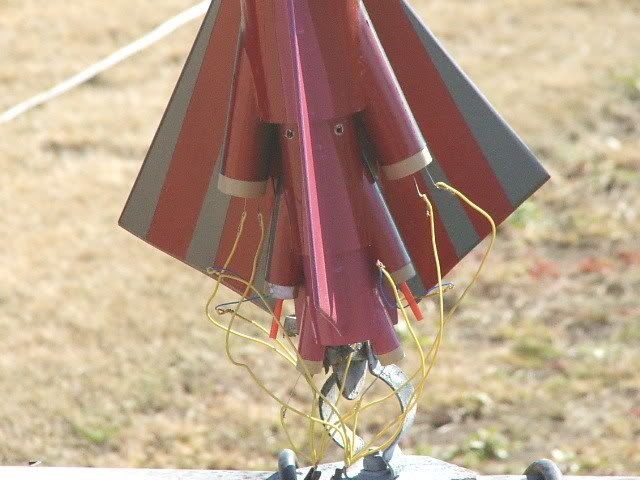MODS: Sorry, I posted in the wrong forum and can't seem to move or delete it. Can you please move it over to Propulsion? Thanks! -Marc
Hi folks,
In a week or so I start my first cluster build. It will be a Der Big Red Max outfitted for 3x18mm engines. Nothing too fancy.
To launch it, can I just customize an extra standard Estes (yellow) ignition system by hacking on some more aligator clip leads? I recognize the optimal way might be to set up a continuity circuit for each igniter, but I'm very lazy.
So, I guess the crux of my question is two fold:
1. Does the standard 4xAA battery set have enough juice to reliably ignite 3 igniters in sync?
2. If not, and if I add a lantern battery or whatever substituting for the AAs, will the extra current available now available at the continuity light stage be larger than before and thus ignite prematurely my igniters?
If the voltage is the same (4x 1.5V AA = 1 x 6V Lantern battery), and the resistance is the same (igniter resistance plus continuity resistor), the current flowing during continuity check stays the same, per Ohms law, right?
Sorry if this is a stupid newbie question!
Marc
Hi folks,
In a week or so I start my first cluster build. It will be a Der Big Red Max outfitted for 3x18mm engines. Nothing too fancy.
To launch it, can I just customize an extra standard Estes (yellow) ignition system by hacking on some more aligator clip leads? I recognize the optimal way might be to set up a continuity circuit for each igniter, but I'm very lazy.
So, I guess the crux of my question is two fold:
1. Does the standard 4xAA battery set have enough juice to reliably ignite 3 igniters in sync?
2. If not, and if I add a lantern battery or whatever substituting for the AAs, will the extra current available now available at the continuity light stage be larger than before and thus ignite prematurely my igniters?
If the voltage is the same (4x 1.5V AA = 1 x 6V Lantern battery), and the resistance is the same (igniter resistance plus continuity resistor), the current flowing during continuity check stays the same, per Ohms law, right?
Sorry if this is a stupid newbie question!
Marc
Last edited:








